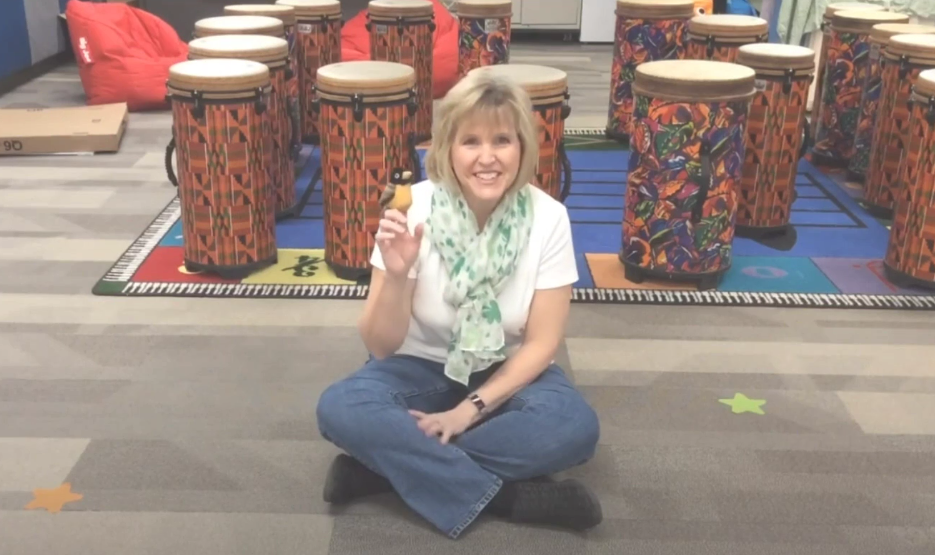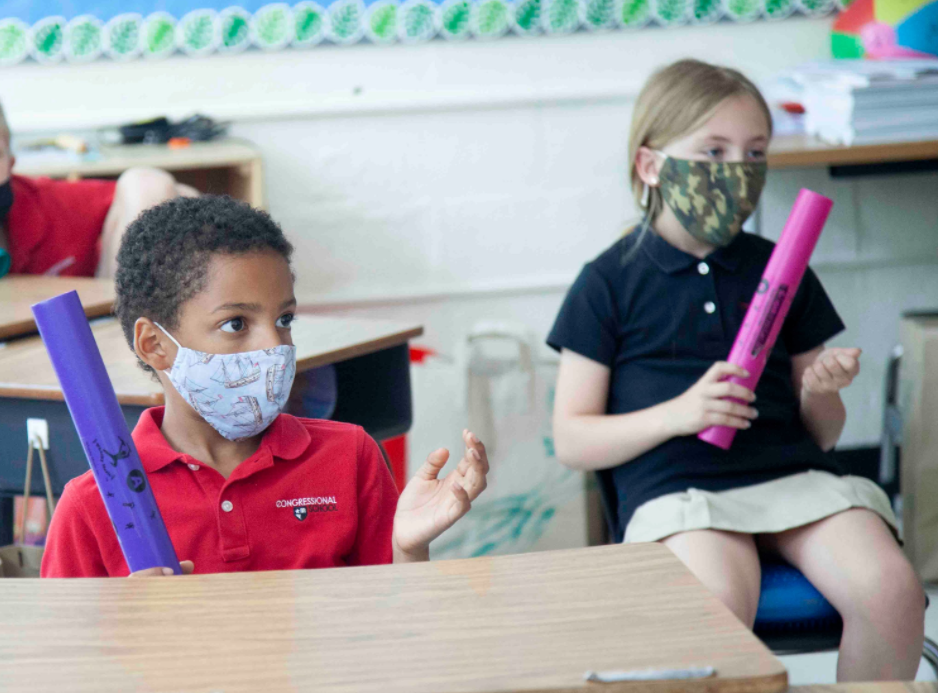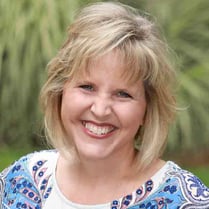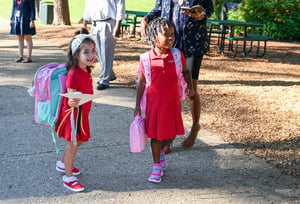Music Teacher, Lisa Bicksel (Infants-Grade 3) discusses the challenges of teaching during the pandemic.
The challenges of teaching remotely last spring were many, and teachers quickly adapted as they sought to overcome the obstacles. For music teacher Lisa Bicksel (infants-grade 3), playing and singing as a class was challenging primarily due to the time lapse over the internet. "I recorded many instructional videos of me singing so that students could sing along. We also focused more on composers, rhythm games and listening activities." She encouraged students to get outside by creating listening walks and sidewalk chalk activities.
In the infant and toddlers classes, she began recording videos for both children and their parents. "Some of the videos were designed to teach the parents the song and the motions to go along with the song. That way, parents could do the lesson with their children," she said. "Choosing songs and rhymes where parents clap their babies hands or tap their feet reinforces their personal bond while providing an outlet for creativity that is so critical in their development."

Like many of us during the lockdown, Ms. Bicksel was feeling isolated and uncertain. “The hardest part was not knowing what was going to happen and how the upcoming year would go. I decided to immerse myself in professional development and sought out the support and collaboration of my peers at other schools. We shared ideas on how we could manage in-person lessons without sharing instruments or singing. I also studied the science behind singing during COVID to help in my planning.”
Purchasing instruments for each student just wasn’t feasible, and a level of ingenuity was needed to get around this. “We got creative and found that swimming pool noodles from the dollar store made the same sound as sand blocks, so we cut them up and put them in individual student music kits. Ms. Philip (K-4 art teacher and Fine Arts Team Lead) had a lot of fabric that we cut into rectangles to use as scarves." Egg shakers, rhythm sticks and playdoh were also added to each kit so that students had a variety of materials to make and move to music.
With singing not possible this year, Mrs. Bicksel’s focus has been on percussion instruments, reading music, ear training, rhythms and dancing. “The students can’t hold hands this year, so the line dances and folk dances have had to be reworked,” she said. The Sol-fa music education system that teaches sound, pitch, and sight-reading also had to be reworked. “Since we can’t sing, we tackled Sol-fa through hand signs and humming. Basically, we’ve just taken the constraints and found ways to work around them,” she laughed.
Determined to keep up the tradition of the winter concert, Mrs. Bicksel worked with her students to record them on stage performing and shared the videos with the community. “Achieving this without singing was a challenge, but we chose a black light activity with white cups which turned out amazing and the students were thrilled. We also showcased students playing challenging rhythms on instruments and paper plates as well as performing a beautiful song through sign-language.The kids were so excited to be able to perform, especially on stage. They’ve told me they would like to do it again.”

With singing restricted due to COVID, Mrs. Bicksel has focused on percussion instruments, reading music, ear training, rhythms and dancing.
Something Mrs. Bicksel misses this year is not going into the infant and toddler classes. "Because of COVID related safety protocols, I was not able to work with our little ones. I miss them so much. At the beginning of the year, some of our youngest struggle to lift their heads or sit up. By the end, they are clapping and tapping to the beat. Their development is so much fun to watch. They soak in the music like sponges."
At the start of the school year, Mrs. Bicksel began by sending the kindergarten through grade 2 bimodal students videos of the lessons.”I quickly realized they needed to be part of the class,” she said. “There are many challenges to this though, like how to tune their instruments, and how to incorporate at-home students in our folk dances that we are learning. The students learned to use whatever they could find to be their dance partners, such as a chair or a coat stand. Parents have also been amazing and have jumped in at times to dance with their students.” She recounted the joy of seeing her bimodal students return to school in-person, “When one of the first grade bimodal students came back to school, she said ‘Mrs. Bicksel, I’m just so happy to see you and I have a really big smile on my face. You just can't see it because of my mask."
Even though modifications have been made to the music curriculum this year, Mrs. Bicksel believes her students will be well positioned for next year's music classes. "We've made the most of this year by honing our music reading and ear training skills. I believe they will be much stronger musicians as a result. I look forward to continuing our musical journey in the fall."

Lisa Bicksel
Music Teacher






